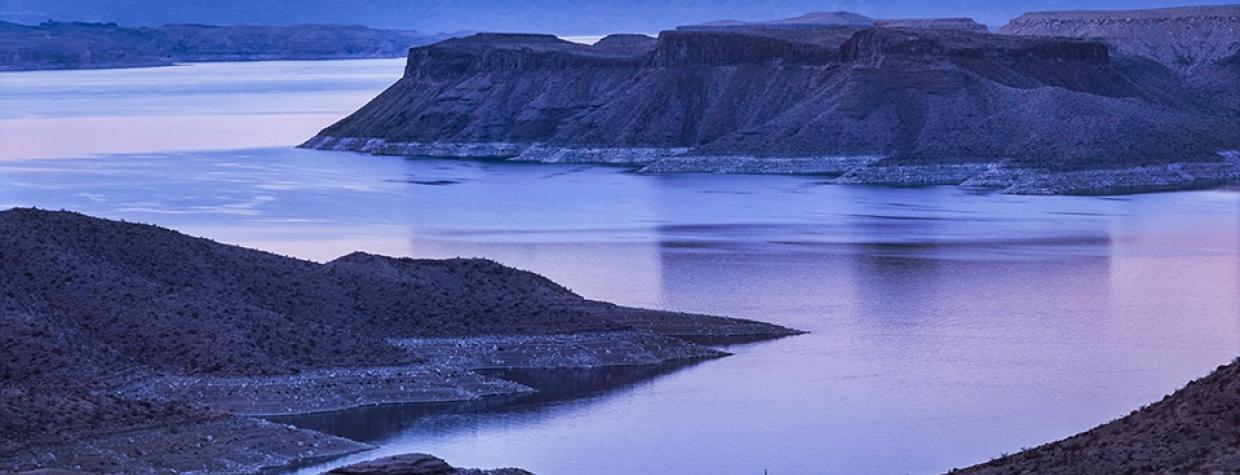You don’t meet a lot of people named Gregg these days. In fact, in 2020, “Gregg” (with three G’s) was only the 5,326th most popular baby name in the U.S., according to the Social Security Administration. So it’s noteworthy that two different Greggs, separated by a century or so, bookend this lovely Northwestern Arizona drive. In between, you’ll find plenty of Joshuas. And even some Cliffs.
The route begins in Antares, a tiny community along State Route 66 — the state-maintained stretch of Historic Route 66 between Seligman and Kingman. Antares’ claim to fame is Giganticus Headicus, a bright green, 14-foot-tall sculpture that looks a bit like one of the moai of Easter Island. Artist Gregg Arnold created the piece from chicken wire, plastic foam, cement and other materials in the early 2000s; today, an adjacent souvenir shop beckons those who stop to pose for a photo in front of the statue.
From here, head north, then northwest on Antares Road, which quickly becomes a wide, well-traveled dirt path through the expansive Hualapai Valley. A few spindly cholla cactuses dot the roadsides, and the Grand Wash Cliffs, which cradle the western part of the Grand Canyon, rise to the northeast. After 5 miles or so, the views to the southwest open up as well, and you’ll see the rocky Cerbat Mountains and, farther north, the lighter-hued White Hills.
At Mile 16.5, on the right, you’ll pass a set of collapsing rock walls — possibly the remains of an old homestead — and a hillside covered with chollas. Around here, the vegetation gets a bit less sparse, and by Mile 28, you’ll see Joshua trees in the distance; they’re on both sides of the road, like an alien army preparing to colonize the Kingman area. Before long, they’re close to the roadway, giving you an up-close look at these strangely shaped members of the yucca family.
Next is an intersection with Pierce Ferry Road, which leads to Pearce Ferry and the Hualapai Tribe’s section of the Grand Canyon. Today, though, continue straight on what now is Gregg’s Hideout Road to pass through a thick forest of Joshua trees. After a couple of turns, you’ll be on Hideout Drive, which traverses a series of rolling hills, passing Joshua trees, other yuccas and ocotillos. At Mile 42, you’ll enter Lake Mead National Recreation Area, where the road gets significantly rougher and narrower. The Mojave Desert vibe here is strong, with yuccas, barrel cactuses and ocotillos mingling on the rocky slopes surrounding the road. Drive carefully: The rocks here are sharp, and this wouldn’t be an easy place to change a tire.
After bumping along for a few miles, you’ll begin your final descent to the 247-square-mile reservoir you came to see. Lake Mead comes into view as you round a corner at Mile 49.3; a mile later, at the end of a sandy path, you’ll reach the secluded bay known as Gregg’s Hideout. It’s named for Tom Gregg, who operated a Colorado River ferry here in the early 1900s, before the lake was created. These days, the site has primitive campsites and restrooms, and anglers say it’s a good place to catch sunfish, catfish and two kinds of bass. And the lakeside views are incredible — a perfect conclusion to a drive that might make you want to change your name to Gregg. (Or Joshua. Or Cliff. Or Giganticus Headicus.)
Note: Mileages are approximate.
Length: 50.4 miles one way (from State Route 66)
Directions: From State Route 66 in Antares (look for the Giganticus Headicus statue), go north, then northwest on Antares Road, which turns into Gregg’s Hideout Road, for 35 miles to Spring Drive. Turn left onto Spring Drive and continue 1 mile to Hideout Drive. Turn right onto Hideout Drive and continue 14.4 miles to Gregg’s Hideout.
Vehicle requirements: A high-clearance vehicle, such as an SUV or truck, is required, but four-wheel-drive is not necessary in good weather. The route crosses numerous washes, so do not attempt the drive after recent rain or if rain is in the forecast.
Warning: Back-road travel can be hazardous, so be aware of weather and road conditions. Carry plenty of water. Don’t travel alone, and let someone know where you are going and when you plan to return.
Information: Lake Mead National Recreation Area, 702-293-8990 or nps.gov/lake

